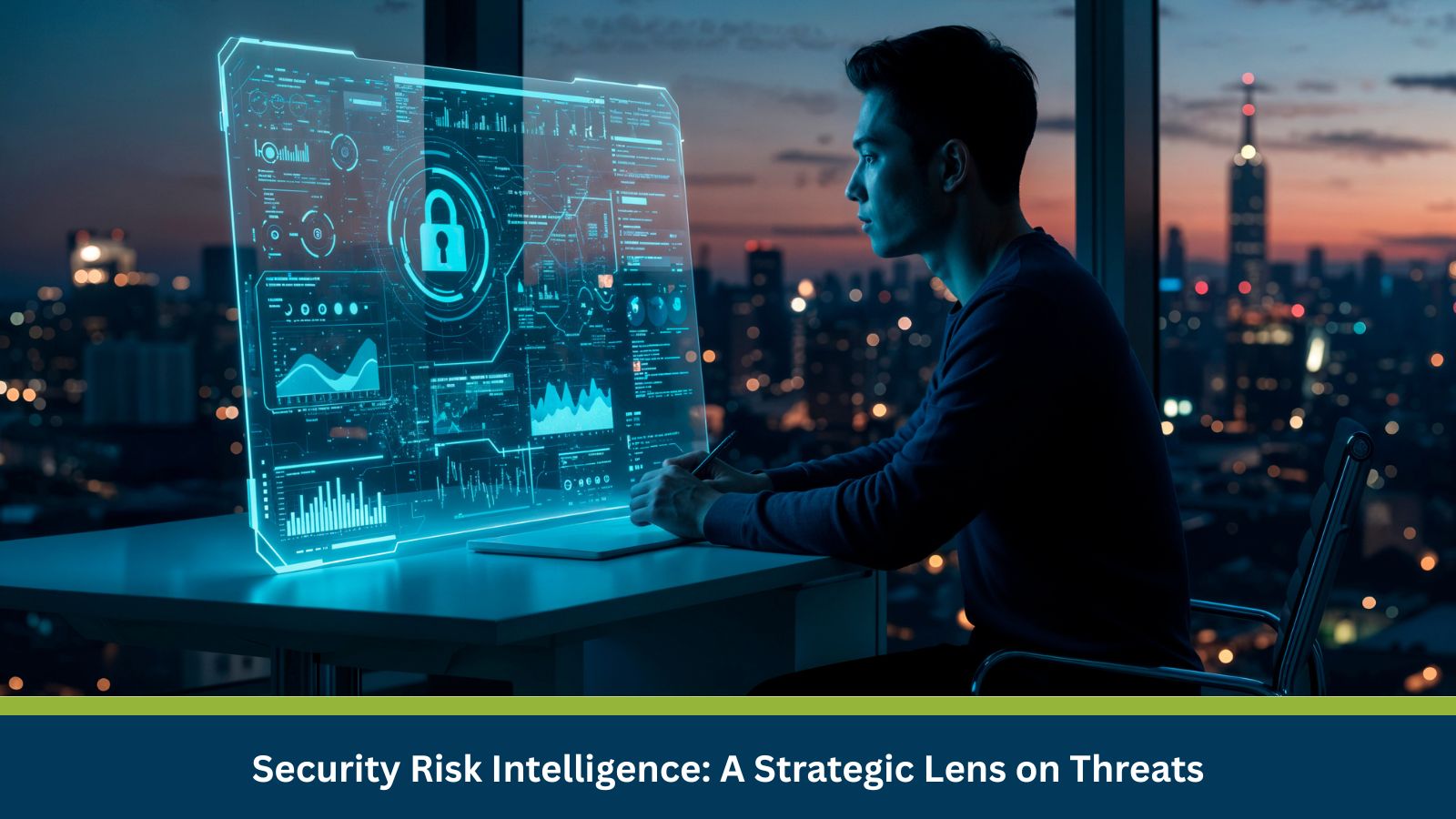In today’s evolving threat landscape, Security Risk Intelligence is a strategic imperative. Risk managers must move beyond reactive defense to cultivate a proactive, intelligence-driven stance. Security Risk Intelligence, repeated thoughtfully throughout this piece, serves as the bedrock for anticipatory, informed decision-making across all dimensions of organizational risk.
Defining Security Risk Intelligence
Security Risk Intelligence is the process of gathering, analyzing, and applying validated information to identify potential threats and empower strategic responses. This discipline goes beyond conventional threat management by integrating data from cyber, physical, operational, geopolitical, and environmental domains to create a single, coherent framework.
Unlike simple monitoring systems that react to anomalies, Security Risk Intelligence builds foresight. It focuses on context—why a threat matters, how it connects to wider risk vectors, and what cascading consequences could unfold if left unchecked. This transformation of raw data into actionable foresight turns security into a strategic enabler.
The Intelligence Cycle in Practice
At the heart of Security Risk Intelligence lies the intelligence cycle, a structured methodology that risk managers can adapt to the needs of their organization:
- Collection – Gathering intelligence from open-source data, proprietary threat feeds, dark-web monitoring, internal systems, and human intelligence.
- Processing – Cleaning, verifying, and correlating disparate inputs to ensure reliability and reduce noise.
- Analysis – Interpreting data into actionable insights, identifying emerging patterns, and prioritizing threats by likelihood and impact.
- Dissemination – Delivering concise, decision-ready intelligence to leadership, security teams, and business units.
- Monitoring – Continuously reassessing both the threat environment and the performance of the intelligence framework.
When applied rigorously, this cycle transforms fragmented information into a structured intelligence product, relevant, timely, and aligned with business objectives.
Why Security Risk Intelligence Matters for Modern Organizations?
1. Anticipating Risks Before They Escalate
According to Logicalis 2025 CIO report, 88% of organizations faced at least one cybersecurity breach in last 12 months, with nearly half experiencing multiple. A purely defensive stance leaves organizations vulnerable to repeated disruptions. With Security Risk Intelligence, businesses anticipate risks, enabling rapid pre-emptive measures that significantly reduce response costs and downtime.
2. Converging Cyber, Physical, and Geopolitical Domains
Risks rarely operate in isolation. For instance, a cyberattack on a logistics system can trigger physical supply chain disruptions, which may then cascade into reputational or regulatory crises. Security Risk Intelligence helps bridge these silos: merging cyber threat intelligence, physical security monitoring, and geopolitical analysis to form a holistic picture.
3. Addressing Alert Fatigue Through Prioritization
A major challenge for security teams is alert overload. A 2025 survey conducted by Forrester Consulting (on behalf of Google Cloud) revealed that 61% of administrators reported being overwhelmed by excessive threat data, and 53% struggled with false positives. Security Risk Intelligence filters noise, using AI-driven threat intelligence platforms (TIPs) to prioritize high-impact risks and eliminate unnecessary distractions.
4. Empowering Decision-Makers with Context
For senior executives, the true value lies not in raw threat feeds, but in understanding implications. Security Risk Intelligence translates technical anomalies into business language: what it means for operations, finance, and reputation. By delivering intelligence in a context-rich format, it empowers the C-suite to allocate resources strategically and communicate risk in board-level discussions.
Tools, Techniques, and Real-World Application
- Threat Intelligence Platforms (TIPs): These automate ingestion, correlation, and distribution of threat intelligence. By integrating with Security Information and Event Management (SIEM) systems, TIPs enhance detection speed and reduce human workload.
- Cyber Threat Intelligence (CTI): A critical subset of Security Risk Intelligence, CTI examines adversary tactics, techniques, and procedures (TTPs) to anticipate attack vectors before they materialize.
- Geopolitical and Environmental Intelligence: For multinational businesses, monitoring geopolitical instability (e.g., sanctions, regional conflicts, political unrest) is crucial. When layered with environmental factors like natural disasters or pandemics, Security Risk Intelligence enables scenario planning and resilient continuity strategies.
- AI-Driven Risk Analytics: The integration of machine learning allows predictive modeling. Instead of merely knowing an attack is underway, organizations can forecast when and where disruptions are most likely to occur, strengthening resilience.
Case in Point: Lessons from Recent Incidents
- The Colonial Pipeline cyberattack (2021) demonstrated how a ransomware incident could shut down a critical fuel supply chain, causing nationwide disruptions in the U.S. The lack of anticipatory intelligence contributed to delayed response. A strong Security Risk Intelligence framework could have identified early indicators of compromise and prepared contingency measures.
- In 2023, global shipping disruptions linked to Red Sea geopolitical tensions highlighted the importance of fusing geopolitical intelligence with supply chain risk management. Businesses that had integrated Security Risk Intelligence into their global operations were able to reroute logistics and reduce exposure.
These examples underscore that risks are no longer confined to silos, cyber, physical, and geopolitical risks converge, and only an integrated intelligence-driven approach ensures resilience.
Final Thoughts?
Security Risk Intelligence is more than a security function—it is a corporate strategy enabler. It strengthens operational resilience, sharpens leadership decision-making, and allows organizations to navigate uncertainty with foresight. In a volatile global risk environment, those who master intelligence will not only survive but thrive.
Your Security Partner
MitKat’s Datasurfr platform delivers real-time, AI-powered risk intelligence, filtered and contextualised by expert analysts to support proactive decision-making. Paired with our Protective Services, we turn intelligence into action—safeguarding your leadership wherever they operate. Collaborate with MitKat to build true business resilience. From Risk Consulting and Security Design to Cyber Security and Protective Services, our integrated solutions help organisations navigate today’s complex threat landscape and build robust, future-ready risk management frameworks.






